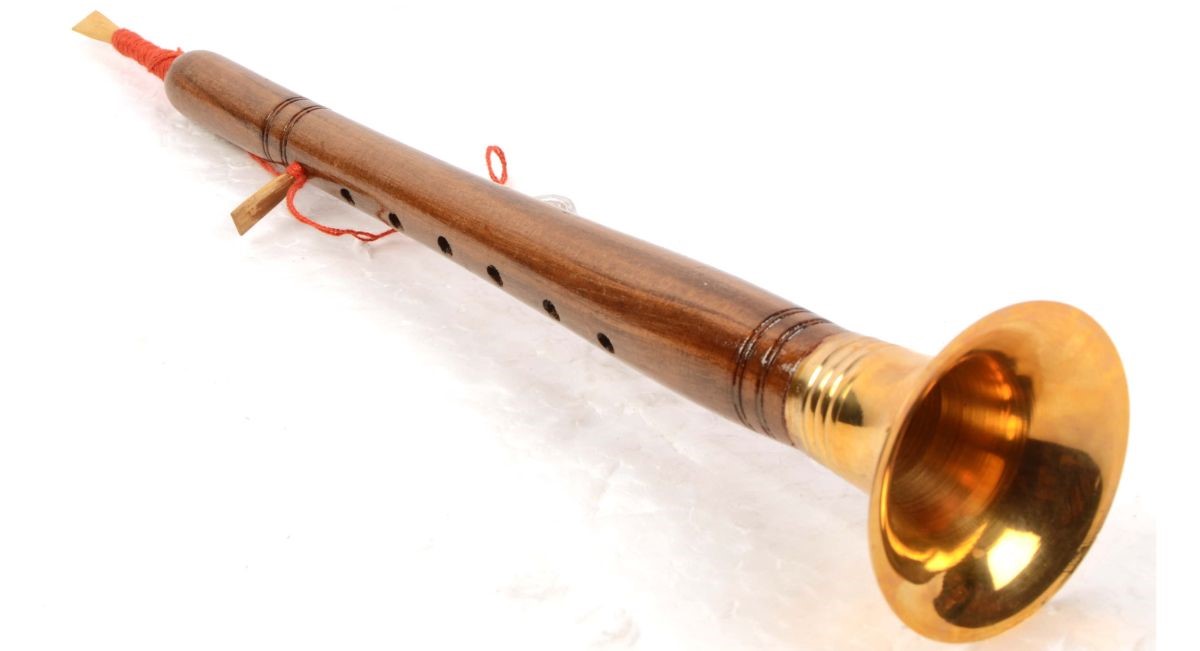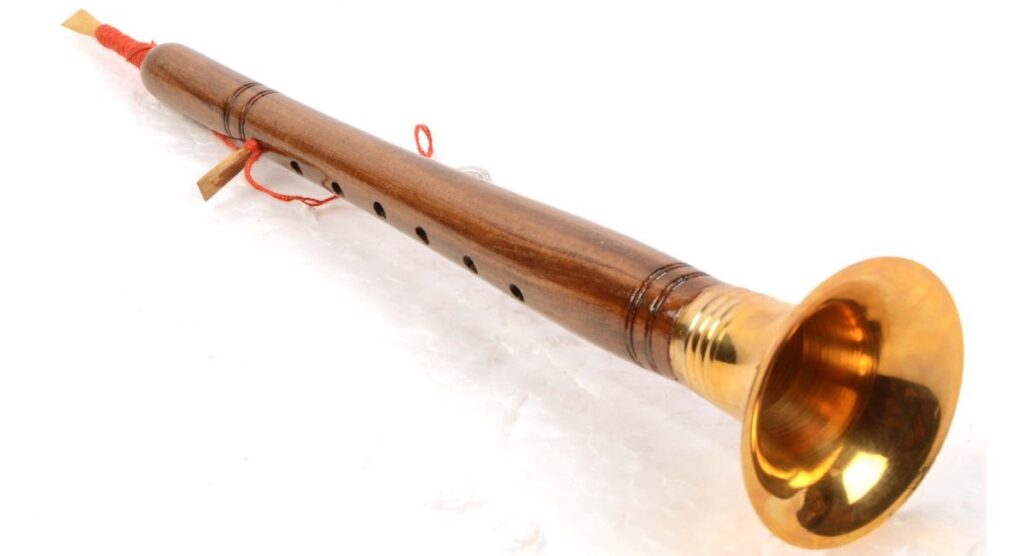Shehnai: The Sound of Heart

Shehnai, or Shenai is a north Indian instrument, with double reed oboe, mostly played at the auspicious occasions.
The sound of Shehnai has such a mesmerizing influence that imbibes a sense of auspiciousness and sanctity in the atmosphere. It is made of wood with a metal flare bell at the end. It is very much similar to the Nadasvaram instrument from south India. Shehnai has seven playing holes, one or two more holes for adjusting the pitch.

The unique name of Shehnai has different stories for its origin. A story that runs with a historical flavor is that Aurangzeb once banned playing Pungi in his royal residence. A barber who was a regular visitor to the royal residence decided to improve the sound of Pungi. He made seven holes on a natural hollow stem and began playing with opening and closing these holes with fingers. It got its name Shehnai from the event when the barber (nai) played this instrument at the court of the king (Shah). Thus, the name came into existence. The sound of Shehnai was considered so auspicious and melodious that it started to be played in the temples.
Another theory of the origin of the Shehnai is that the name consists of two words- ‘sur-nai’. The word ‘Sur’ means ‘tone or tune’ and ‘nai’ is used in different languages for ‘pipe or reed’.
The North Indian city Banaras has all credit for the promotion of this instrument and producing some of the world fame Shehnai players. The major contributors were Chote Khan, Gauri Shankar, and Nandlal who took the art of Shehnai-playing to a new height. The greatest contributor to Shehnai was Ustad Bismillah Khan whose devotion to Shehnai was such an extent that any other thing was less important to him.
Earlier Shehnai-playing was performed only in traditional events and temples but later on, it grabbed the attention of the international audience.

Also known as ‘Mangalvadya’, it is known to be played at (mangal) auspicious occasions such as pooja, wedding ceremonies in the temples.
Playing Shehnai is not an easy task, one has to have mastery over breath control. Fine finger work is performed to execute fine tones and sharp notes. Listening to Shehnai attentively, one can notice that the notes are played continuously and generally used in classical and light classical music.
In South India, Shehnai was initially used in elaborating pathos in a film’s background, but gradually few musicians worked tremendously well that they began to use it for portraying happy occasions and celebrations. The great musicians of south India Ilaiyaraaja and A R Rahman are renowned names whose creative efforts gave more popularity to Shehnai. In old times, Shehnai playing was mainly based upon classical mode and ragas. In addition, playing it was not easy for musicians, one had to put so much effort to bring out the right composition during the process of recording. But nowadays, with the initiation of new technology, it has become a lot simpler the way it is recorded. With a more innovative approach, Shehnai is being adapted to different styles of music that are able to express a variety of emotions. No wonder, a new generation would take one step ahead to learn it.